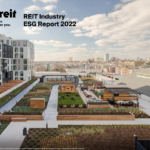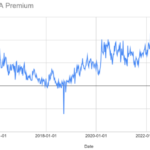Four Clean Green Dividends
by Debra Fiakas CFA The recent pullback in stock prices in the U.S. equity market has opened the door to some interesting dividend yields. Investors with a taste for environmentally-friendly businesses have some particularly interesting alternatives that can pump up the purse as well as protect Mother Earth. AES Corporation (AES: NYSE) is a world-class power generator from mixed portfolio of conventional and renewable power sources. About 28% of its 29,352 megawatts of generation capacity is from renewable fuel sources, including hydro, biomass, solar and wind, and another 33% from plants using natural gas. The balance of...
My Yieldco Raised Its Dividend With This Weird Trick
Tom Konrad CFA Clean energy yieldcos buck the general trend by paying out a large proportion of cash flow to investors, and rapidly increasing their dividends at the same time. The key to this trick has been their rapidly appreciating stock prices. High yield companies generally grow slowly, while high growth companies have low dividend yields. Normal companies grow by investing some profits in new business opportunities. Early stage growth companies typically retain all their earnings to invest in new business. More mature companies have fewer opportunities, and so share a larger proportion of...
Five Green REITs
by Tom Konrad Ph.D., CFA
Why Green Buildings are Profitable Buildings
Buildings are responsible for approximately a third of greenhouse gas emissions, so making buildings more efficient and switching them to renewable sources of energy is an essential part in addressing climate change.
Fortunately, new technologies such as cold climate heat pumps, heat pump water heaters, induction stoves, as well as the ever falling cost of renewable electricity and improvements to insulation and building envelopes often provide opportunities to improve buildings while achieving extremely attractive investment returns from the energy and maintenance savings alone.
Because of the great financial returns, building owners who...
Capstone Infrastructure: How Bad Is The Worst Case?
Tom Konrad CFA Disclosure: I have long positions in MCQPF and AQUNF. Capstone Infrastructure Corporation (TSX:CSE, OTC:MCQPF) has been trading at a significant discount to its peers because of a power supply agreement which expires at the end of 2014. Capstone is seeking a new agreement with the Ontario Power Authority for its Cardinal gas cogeneration facility, a process which has taken much longer than management expected. The cardinal Cardinal plant currently accounts for about a third of Capstone’s revenue and a quarter of earnings before interest, taxes, and depreciation (EBITDA), but two-thirds of distributible income. The high fraction...
Unlocking Solar Energy’s Value as an Asset Class
by James Montgomery
2014 is predicted to be a breakout year for solar financing, as the industry eagerly pursues finance innovations. Many of these methods aren't really new to other industries, but they are potentially game-changing when applied in the solar industry.
Investors Expect Rapid Growth At Pattern Energy Group
Tom Konrad CFA Pattern Energy's Gulf Wind Farm in Armstrong, Texas Disclosure: Long BEP. Pattern Energy Group (NASD:PEGI, TSX:PEG) completed a very successful Initial Public Offering (IPO) on the Nasdaq and Toronto stock exchanges on September 27th. Not only did the shares price at $22, near the top of the expected range, but the underwriters exercised their full over allotment option to purchase 2.4 million shares in addition to the initial 16 million offered. Total proceeds from the offering were $404.8 million. Most of the proceeds went to Pattern Energy Group, LP (PEGLP) in consideration for a...
Yieldco Valuations Look Attractive
By Tom Konrad Ph.D., CFA
Despite a run-up in the fourth quarter of 2023, it has been a long time since valuations of clean energy stocks have been this cheap. Perhaps it is worries about hostility towards clean energy under a new Trump administration, or disappointment at the slow implementation of the Inflation Reduction Act. Whatever the cause, prices are low, and many clean energy stocks are likely to produce good returns even if the political climate turns further against them.
This is especially true for companies that are less dependent on favorable policy or subsidies. For instance, Yieldcos, high...
Trina Solar’s Second Convertible Bond
By Beate Sonerud and Sean Kidney China’s Trina Solar (TSL)is issuing US$100m of convertible bonds with 5-year tenor and 4% annual coupon, with semi-annual payments. An extra US$15m could be raised, as Trina has given the underwriters a 1-month window to buy additional bonds. Guess they are waiting to gauge demand. Underwriters are Deutsche Bank, Barclays, and Credit Suisse, with Roth Capital Partners as co-manager. The bonds can be converted to shares (American Depositary Shares, meaning they are listed in the US) at an initial price of US$14.69 per share. Currently, Trina’s shares are trading at US$11.40, after...
Five Green Dividend Stocks to Watch
Tom Konrad CFA The Perfect Stock My ideal stock is: Green (in that the company is helping to make the economy more sustainable) Pays a good dividend (in the current low-interest rate environment, I consider 4% to be “good”) Has earnings and free cash flow large enough to easily sustain the dividend, and Has low debt, leading to low earnings and cash flow volatility. I like such stocks because I can buy them, and pretty much ignore them. This leaves me time to research more speculative green stocks, while still knowing that much of my portfolio is producing...
Yieldcos: Boom, Bust, and (Now) Beyond
The Yieldco model is not broken. But investor expectations have changed. by Tom Konrad Ph.D., CFA The Yieldco bubble popped almost exactly a year ago after a virtuous cycle turned vicious. Last May, I explained how these public companies (which own solar farms, wind farms and similar assets) could grow their dividends at double-digit rates despite no internal growth or retained earnings. This “weird trick” can work so long as the Yieldco’s stock price is rising, allowing it to sell stock at higher valuations and increase the amount of money invested per share. As long...
CAFD: Don’t Let The Joke Be On You
Tom Konrad CFA Sunpower and First Solar are indulging in nerd jokes. Their YieldCo, called 8point3 Energy Partners had its initial public offering on June 19th. The name is an astronomy nerd joke and a reference to the time it takes the sun's rays to reach the Earth, 8.3 minutes. Last week, we found out that its ticker symbol is CAFD, a "financial nerd joke" because it stands for "cash available for distribution." CAFD is an important YieldCo metric, but it's not a perfect one. If you're not a financial nerd but are interested in...
Power REIT’s Preferred Stock Offering: A Hedge That Pays 7.75%
Power REIT's preferred stock offerning (NYSE:PW-PRA) is an excellent hedge for the legal risks borne by the holders of its common stock (NYSE:PW.)
The Clear Way to Buy Clearway
By Tom Konrad, Ph.D., CFA
A reader of my recent article on Yieldcos asked which share class of Clearway Energy was the better to buy for tax purposes: Class A shares (CWEN-A) or Class C Shares (CWEN).
For tax purposes, they are identical. They pay the same dividend, and it is treated the same no matter which share class you buy. The reason many large investors often trade CWEN rather than CWEN-A is because it is more liquid. As I write on Jan 23rd, Yahoo! Finance puts the 3 month average share volume for CWEN at 1,372,714, while the corresponding number...
No Longer Just Growth: Investing in Renewable Energies for Yield
by Robert Muir Given the determined investor quest for yield as the Federal Reserve maintains the benchmark Federal Funds rate at zero, and the resurgence of attention being paid to alternative energy generation, mainly solar, and to a lesser extent wind and hydro, it’s no wonder Yield Co’s have gained so much investor interest lately. In the near to mid-term, the enthusiasm may be justified. Supported by Power Purchase Agreements, energy infrastructure financing and leasing contracts, and electricity transmission and distribution concessions, all with credit-worthy counter-parties, Yield Co’s are designed specifically to pay out a large portion of...
Hannon Armstrong’s Strong Q2 Keeps It In My Top Picks
By Jeff Siegel Hannon Armstrong (NYSE:HASI), one of my top picks for 2014, just made me very happy. Yesterday, the company announced its Q2 Core Earnings of $4.7 million or $0.22 per share. On a GAAP basis, the Company recorded net income of $2.9 million. Here are some other highlights. . . Raised approximately $70 million in April, 2014 in a follow-on offering. Increased the flexibility and expanded the capacity of its existing credit facility by $200 million. Completed more than $200 million worth of transactions, including the acquisition of a $107 million portfolio of land...
Funding The Energy Transition at Clean Energy Credit Union
by Tom Konrad, Ph.D., CFA
With interest rates as low as they have ever been, I believe there is little point in small investors investing in bonds or bond funds, even if an allocation to fixed income is needed to match their investments to their ability and desire to take on risk. With little potential upside from interest, I believe it is better to take advantage of the added safety of federally backed insurance by depositing money in a bank or credit union savings account or certificate of deposit (CD) ladder.
We can do that and avoid having our deposits fund...






